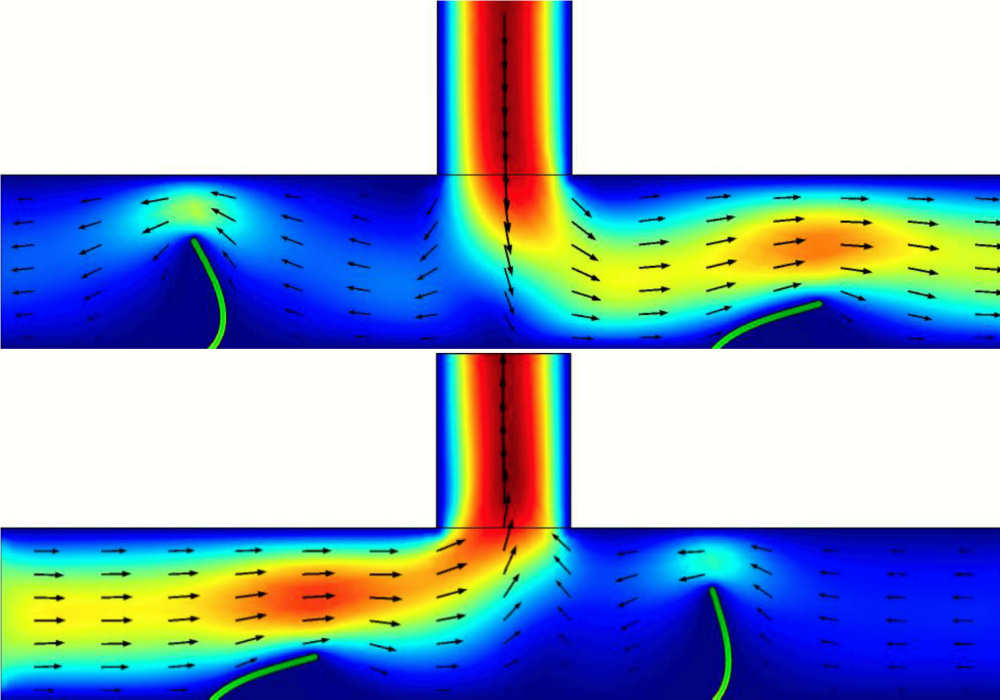|
Equiping with wide-spreading cloud computing resources and ever-increasing computing power, scientists and engineers are getting used to take a computational approach to solve their facing problems. Unfortunately, this approach to a new subject often faces a dilemma, where the governing equations and constitutive relations involved are esoteric and difficult to unravel. It is especially true for a problem involving multiple physics processes. This course (Partial Differential Equations and Multihysics Coupling Simulations 偏微分方程與多重物理耦合模擬) comes to provide a training by introducing the core knowledge and some hand-on experiences to students and preparing them with an ability to face this dilemma.
After completion of the course, the students will be able to:
• grasp the appropriate governing equations for a problem
• discover relevant constitutive relations for the simulation;
• successfully perform simulations on some classic examples of multiphysics coupling systems.
Lecture notes will be posted in time whenever possible.
Course History:
(1) First delivery in February, 2020
Textbooks and Tutorials
NA but will be announced in the near future. Workshop examples will be demonstrated on either Matlab FEATool Multiphysics APP or COMSOL Multiphysics. Install appropriate FEM packages on your computer or perform simulations on cloud (such as SimScale) is highly recommended.
Grading Policy
3 homeworks and 1 project study from one out of several topics in the application of the course content. 3 homeworks (60%) and 1 project (40%). No mid-term and final exam.
1 |
Chapter 1 Introduction to Partial Differential Equations (PDEs) ( PDF - 4.7 MB) PDF - 4.7 MB)
1.1 Conservation laws for governing equations of multiphysics simulations ( PDF - 630 kB) PDF - 630 kB)
1.2 Some physics-related PDEs
1.3 Characteristic curves and Classification of PDEs
1.4 Initial conditions (ICs) and boundary conditions (BCs) of PDEs
|
2 |
Chapter 2 Discovering Approximate Solutions of PDEs
2.1 Solve PDEs approximately
2.2 Finite element method (FEM)
2.3 Weak form of PDEs
2.4 Basic steps to solve PDEs with FEM: a) Discretization of the continuum; b) Selection of the shape functions; c) Galerkin formulation of the algebraic equations for one element; d) Assembling the algebraic equations for all elements; e) Solve the system of algebraic equations efficiently.
Workshop 1 Solving Poisson equation and Helmholtz equation in a simple domain using FEATool Mutiphysics. Solving Poisson equation and Helmholtz equation in a simple domain using FEATool Mutiphysics.
Homework 1---Due xxx. xx, 2020
|
3 |
Chapter 3 Governing Equations of Mechanical Deformation and Heat Transfer in Solids
3.1 Concept of representative volume element (RVE)
3.2 Fabrication of ordered semiconductor quantum dots (Lecture 9)
3.3 Generic conserved quantity in unit mass and the associated flux
3.4 Governing equation, auxiliary relation and boundary conditions for heat transfer process
3.5 Displacement changes, strain, and stress in a solid under loading
3.6 Navier equation and constitutive relationship of solid deformation
Workshop 2  Simulate heat transfer in a ceramic strip with FEATool Multiphysics. Simulate heat transfer in a ceramic strip with FEATool Multiphysics.
|
4 |
Chapter 4 Fluid Mechanics
4.1 Flow-induced spatial variations of fluidic properties
4.2 Flow types: a) compressible and incompressible fluids, b) inviscid, Newtonian, and Non-Newtonian fluids, c) Laminar and turbulent flow
4.3 Governing equations of fluid mechanics based on mass and momentum balance in a moving medium
4.4 Governing equations for some specialized flows: a) viscous flow of Newtonian fluid, b) Stokes flow, and c) inviscid flow
Workshop 3  Simulation of incompressible 2D Laminar flow with Navier-Stokes equations using Comsol Mutiphysics. Simulation of incompressible 2D Laminar flow with Navier-Stokes equations using Comsol Mutiphysics.
|
5 |
Chapter 5 Electrostatics and Magnetostatics
5.1 Governing equation and boundary conditions of electrostatic phenomena using electric potential as dependent field variable
5.2 Constitutive relationship of a material in an electric field
5.3 Governing equation of magnetostatics
5.4 Constitutive relationship for a material in a magnetic field
Workshop 4  (Specify simulation tool to be used here) Magnetic potential around a permanent U-shaped magnet (Specify simulation tool to be used here) Magnetic potential around a permanent U-shaped magnet
Homework 2---Due xxx. xx, 2020 |
6 |
Chapter 6 Special Topics on Mutiphysics Coupling: Chemical Reaction Flow System
6.1 Concept of chemical field and its relation with concentrations of chemical species
6.2 The mass balance principle of chemical species in a chemical reaction system
6.3 Energy/mass transport equations with source terms resulting from chemical reactions
Workshop 5  (Specify simulation tool to be used here) A microreactor device design by coupling Laminar flow of reactants through a catalyst bed (Specify simulation tool to be used here) A microreactor device design by coupling Laminar flow of reactants through a catalyst bed
|
7 |
Chapter 7 Special Topics on Mutiphysics Coupling: Electro-Thermo Effect
7.1 Mechanisms of Joule heating and dielectric heating
7.2 Governing equation of electro-thermal effect for a dielectric in electromagnetic fields
7.3 Boundary conditions
Workshop 6  (Specify simulation tool to be used here) Simulation of an electrothermal actuator (Specify simulation tool to be used here) Simulation of an electrothermal actuator
|
8 |
Chapter 8 Special Topics on Mutiphysics Coupling: Fluid-Solid Structure Interaction
8.1 Governing equation for the fluid subsystem
8.2 Governing equation for the deformable solid
8.3 Velocity/Displacement matching and momentum matching at the interface of fluid and solid subsystems
Workshop 7  (Specify simulation tool to be used here) Fluid-structure interaction for a Laminar flow across a soft structure (Specify simulation tool to be used here) Fluid-structure interaction for a Laminar flow across a soft structure
Homework 3---Due xxx. xx, 2020
|
9 |
Chapter 9 Special Topics on Mutiphysics Coupling: Strain- Electrostatic Effect
9.1 Mechanisms of piezoelectric/piezoresistive effects
9.2 Constitutive relationships of a solid in an electrostatic field
9.3 Governing equation of a solid with strain- electrostatic coupling
9.4 Boundary conditions
Workshop 8  (Specify simulation tool to be used here) Simulation on a piezoelectric energy harvester (Specify simulation tool to be used here) Simulation on a piezoelectric energy harvester
|
10 |
Chapter 10 Special Topics on Mutiphysics Coupling: Electromagnetic Wave Propagation in Medium
10.1 Mechanism of material responses to electromagnetic waves ,br />
10.2 Constitutive relationship of material responses
10.3 Governing equations of wave propagation in a medium
10.4 Initial conditions and boundary conditions for electromagnetic wave propagation in medium
Workshop 9  (Specify simulation tool to be used here) To be announced (Specify simulation tool to be used here) To be announced
|
11-12 |
Student Project Presentation Session I and II
|
|
|


